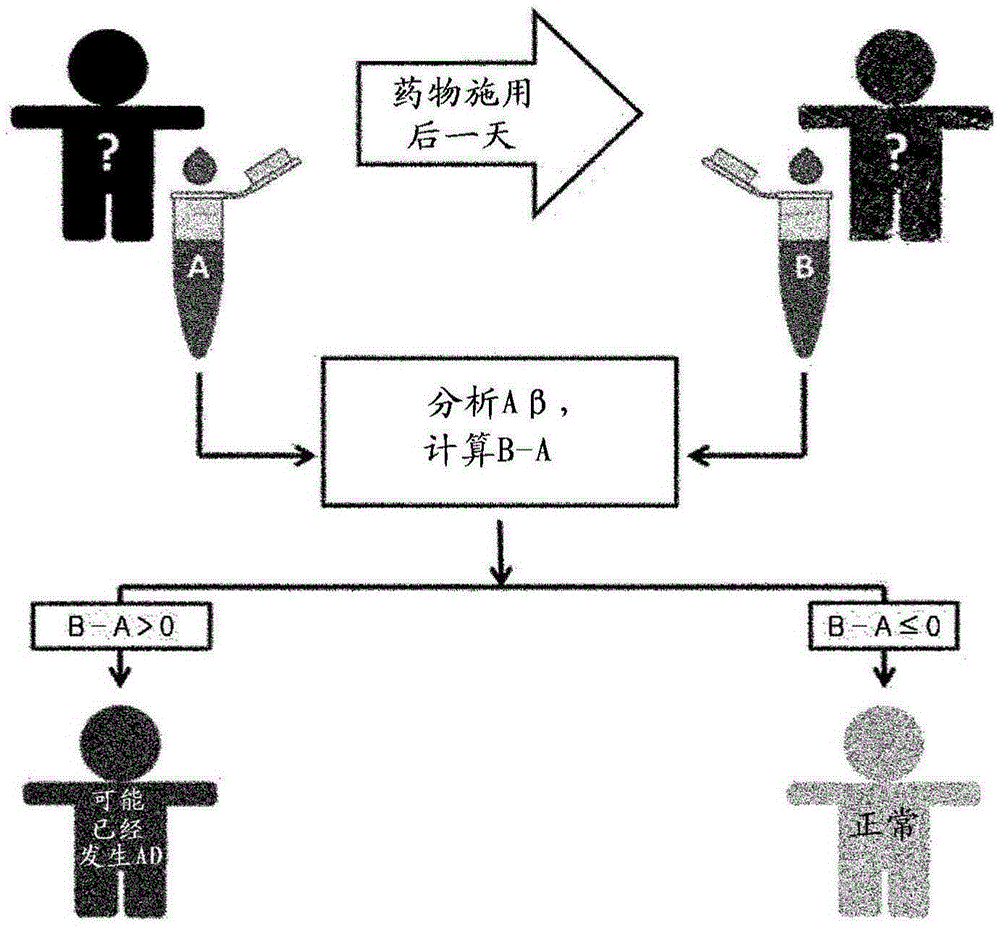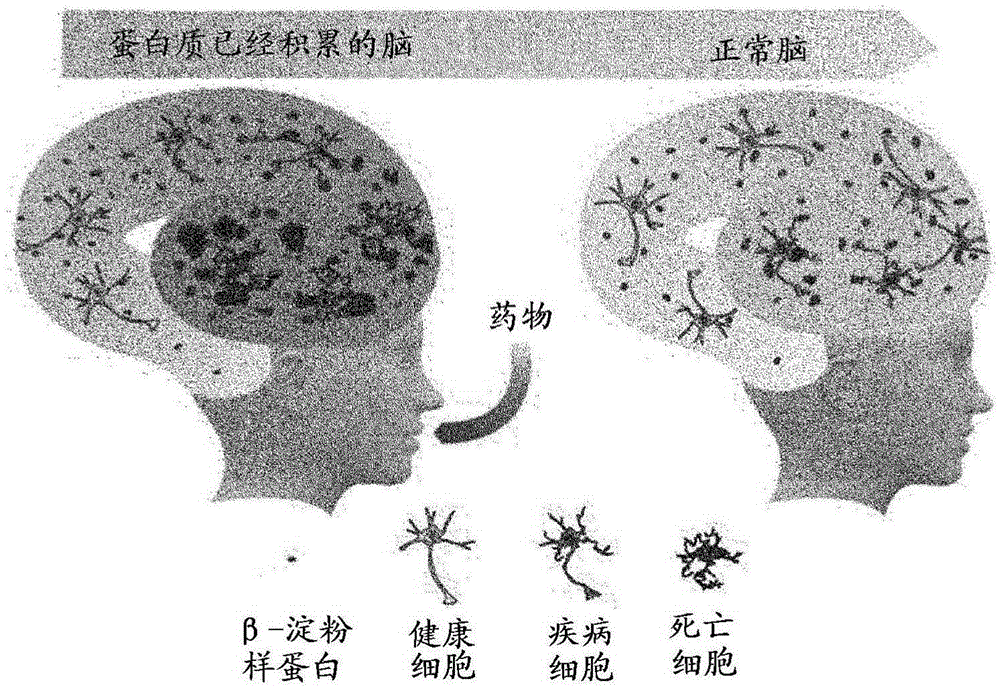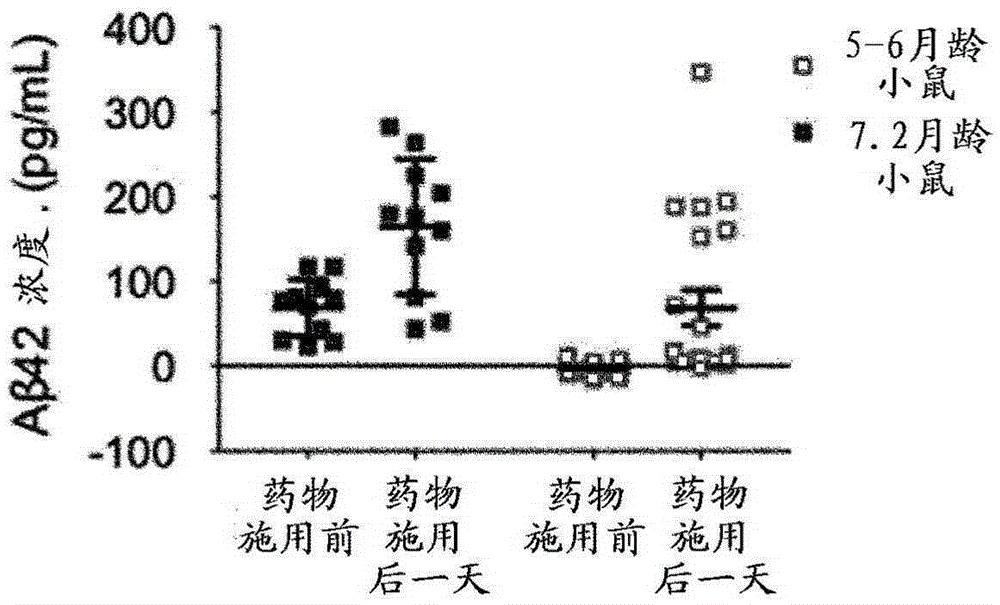Diagnostic kit for diagnosing disorders or diseases related to abnormal protein aggregation or misfolding of protein using dissolution of protein aggregates
A diagnostic kit, misfolding technology, used in peptide/protein components, biological testing, disease diagnosis, etc., can solve problems such as high cost, difficulty in accurately diagnosing Alzheimer's disease, and invasive costs
- Summary
- Abstract
- Description
- Claims
- Application Information
AI Technical Summary
Problems solved by technology
Method used
Image
Examples
Embodiment 1
[0104] Diagnostic kit for measuring the concentration of aggregated protein before and after dissociation
[0105] 1. Preparation of Mice
[0106] Female APP / PS1 transgenic mice were used as test animals, and a total of 32 mice (11 at 5-6 months and 21 at 7.2-8.6 and 13 months) were used. The use of 5-6 month old mice was due to the accumulation of β-amyloid plaques in the brain starting from 5 months.
[0107] The transgenic APP / PS1 mouse model was B6C3-Tg (APPswe, PSEN1dE9) 85Dbo / Mmjax mice purchased from Jackson Laboratory (USA), which were bred and used in experiments according to the instructions of the Experimental Animal Ethics Committee.
[0108] EPPS was administered to each of 31 mice at a dose of 1,000 mg / kg / day.
[0109] 2. Blood draw and measurement of β-amyloid concentration
[0110] Before and after EPPS administration, blood was drawn from the retro-orbital vein of the mice using microtubes (Marienfeld, Germany) treated with 80 IU / mL heparin. Blood d...
Embodiment 2
[0127] Diagnostic kit for measuring dissociated concentration of aggregated protein in blood
[0128] Measurement of β-amyloid monomer concentration and diagnosis of Alzheimer's disease using APP / PS1 / Tau transgenic mice
[0129] 1. Preparation of Mice
[0130] 5-month-old female APP / PS1 / Tau transgenic mice were used as test animals.
[0131] The transgenic APP / PS1 / Tau mouse model was B6;129-Psen1tm1MpmTg(APPSwe, tauP301L)1Lfa / Mmjax mice purchased from Jackson Laboratory (USA), which were bred and used in experiments according to the guidance of the Experimental Animal Ethics Committee.
[0132] 2. Plasma and Whole Blood Processing
[0133] Blood was collected in K2EDTA-treated vacuum tubes containing Roche Complete Mini (protease inhibitor) solution and centrifuged. Plasma separated from the cell fraction was collected in Eppendorf tubes and made into 0.1 mL samples for immediate use or stored at −80 °C for later use. Whole blood was collected in Eppendorf tubes, tr...
Embodiment 3
[0146] Diagnostic kit for measuring dissociated concentration of aggregated protein in blood
[0147] Measurement of β-amyloid oligomer concentration using APP / PS1 transgenic mice
[0148] 1. Preparation of Mice
[0149] Nine-month-old female APP / PS1 transgenic mice were used as test animals.
[0150] The transgenic APP / PS1 mouse model was B6C3-Tg(APPswe, PSEN1dE9)85Dbo / Mmjax mice purchased from Jackson Laboratory (USA), which were bred and used in experiments according to the guidance of the Experimental Animal Ethics Committee.
[0151] Sample processing and concentration measurement of β-amyloid were performed in the same manner as in Example 1.
[0152] Table 7 shows the monomer concentration in the plasma of the control group (UPAβ), the monomer concentration in the plasma of the EPPS group (MPAβ) and the monomer concentration in the whole blood of the EPPS group (MBAβ), as well as the UP / MP and MB / MP values . The average values of the three measurements are sh...
PUM
 Login to View More
Login to View More Abstract
Description
Claims
Application Information
 Login to View More
Login to View More - R&D
- Intellectual Property
- Life Sciences
- Materials
- Tech Scout
- Unparalleled Data Quality
- Higher Quality Content
- 60% Fewer Hallucinations
Browse by: Latest US Patents, China's latest patents, Technical Efficacy Thesaurus, Application Domain, Technology Topic, Popular Technical Reports.
© 2025 PatSnap. All rights reserved.Legal|Privacy policy|Modern Slavery Act Transparency Statement|Sitemap|About US| Contact US: help@patsnap.com



